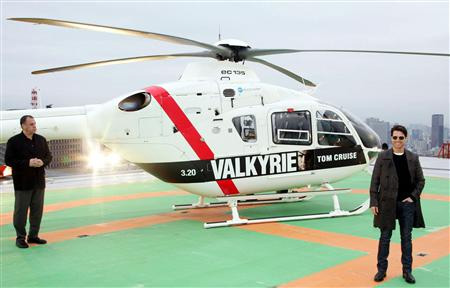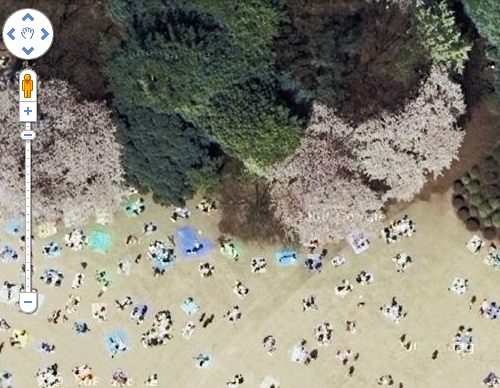Joe has previously written about the potential for corporate and personal jets to make it big in Japan, what with Japan’s massive excess of airports previously noted in this post. Joe also pointed out the enormous heliports in Shin-Kiba, a relatively remote and underutilized location.
For me, when I look at a Google Maps satellite view of Tokyo, all I see is wasted potential. Almost every major skyscraper in Tokyo has a rooftop heliport. Narita Airport is infamously far away from the center of Tokyo (and even more galling, Japan’s famous bullet trains don’t run to Narita, despite the fact that this would be the best way to promote the symbol of technological Japan to the world). There is a helicopter service that flys between Narita Airport and heliports in Tokyo, Gunma and Saitama — probably a good thing for the few rich executives living out in mountain ranches in Gunma — but basically pointless for those in Tokyo. Why? For some reason, it’s located out in Shin-Kiba, a relatively remote area near Tokyo bay, and requires a taxi ride from the station if you’re taking the train.
Joe and I have discussed this in the past as utterly pointless. The chopper flight costs thousands of dollars, yet if you live in most parts of urban Tokyo, it takes the same amount of time to get there as taking the express train or bus! Why, we lamented, can’t the Tokyo heliport be the top of the Shin-Maru building in Marunouchi, or atop of Roppongi Hills? That’s a type of service that executives and bankers could probably use, and it could probably get enough interest to level-up from a charter flight to a quasi-regular heli-bus service.
But there’s breaking news on this front: starting next month, Ark Hills in the Akasaka/Roppongi area, one such building with an unused heliport on its roof, will become a heliport offering chopper flights to Narita Aiport! This is even more awesome for everyone’s favorite Viceroy because I work in Ark Hills! (Although it seems unlikely that I’ll be able to afford the inevitably overpriced fare.) Here’s an excerpt from the Nikkei story:
Mori Building Co. will start in April helicopter charter service between Narita airport and Ark Hills, a major commercial complex it owns in central Tokyo, targeting foreign business executives visiting Japan on company-owned private jets.
President Minoru Mori has been nursing the idea for many years, feeling himself that the two hours it takes to travel from Narita to the firm’s headquarters is annoyingly long. From the airport to central Tokyo, for example, takes about an hour by express train. The charter flights will be serviced with rented helicopters until an aircraft purchased from Eurocopter for 500 million yen arrives in May.
Helicopter services between Narita airport and Tokyo are already available, but most of the flights, operated by companies like Excel Air Service Inc., use Tokyo Heliport in Shinkiba, close to the southeastern edge of the city… Ark Hills’ prime location, in Minato Ward, gives Mori Building a competitive edge over its rivals.
The helicopter service is also intended to make areas around Ark Hills more attractive places to locate businesses. Mori Building currently owns and manages a total of 110 business and multipurpose buildings, and many of them are situated in Minato Ward. The company estimates that as of the end of March, 95% of the space will be filled with tenants and that the average rent per 3.3 sq. meters will be 36,000 yen, up 12.5% year on year.
Here’s a Google Maps look at the Ark Hills heliport — scroll around a bit to see lots of other helipads on other neighboring tall buildings.
The service is supposed to go public next month, but one of the first beneficiaries of direct flights from Narita to Roppong is Tom Cruise:

Hollywood star Tom Cruise (46) has brought his whole family to Japan with him for the first time. He arrived in Tokyo yesterday with his wife, actress Katie Holmes (30) and their daughter Suri (2). They flew by private jet into Narita Airport, where they were greeted by about 1,000 fans, before transferring to a helicopter for the trip to the Roppongi Ark Hills complex in central Tokyo. Cruise is in town to promote the WWII movie “Valyrie,” which opens here March 20, and the helicopter was painted with a promo for the flick. Cruise and family will be here until Thursday and attend the movie’s Japan premiere.
Regardless, I’m mighty please with the powers-that-be for finally listening to Joe (and my) recommendations to open up helicopter travel, and hope this is a harbinger of more good things to come.




